Go Naked! Hairless dog breeds
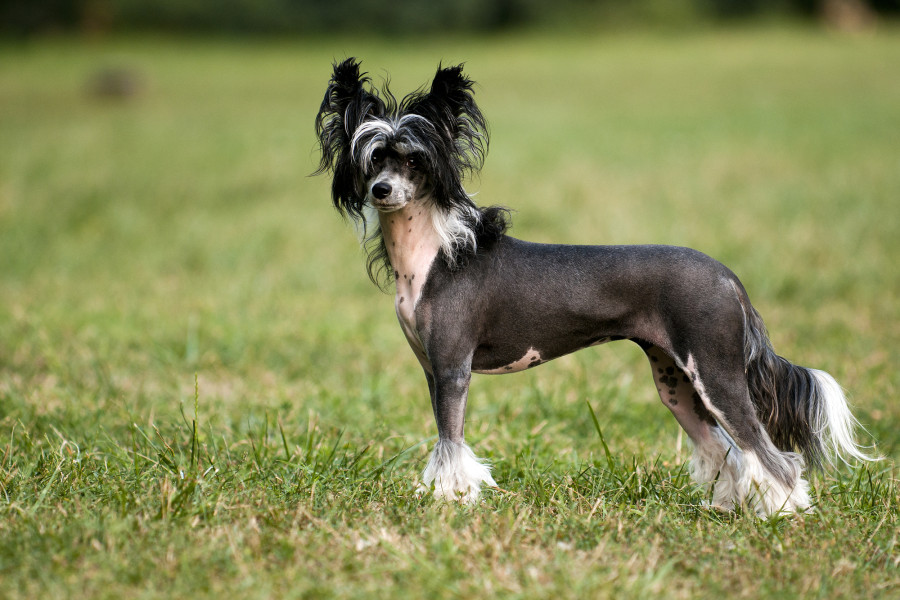
Not a fan of fur? Tired of hair everywhere? Why not go nude? Or at least, check out some hairless dog breeds.
Most hairless breeds arise from the same dominant genetic mutation that causes ectodermal dysplasia (the fancy term for hairlessness). It’s actually a homozygous lethal---which means it causes pre-embryonic death if a puppy inherits two copies of it. That means that all hairless dogs (except for American Hairless Terriers) have one copy of the hairless gene, and one copy of the normal coated gene. It’s also why all hairless breeds (except for American Hairless Terriers!) have to have both coated and hairless dogs in the breed; it’s impossible for them to breed “true” because all the hairless dogs are heterozygotes.
The hairless gene has what are called polygenic effects---meaning one gene affects more than one trait. In the case of hairless dogs (except, again, for American Hairless Terriers!) the hairless gene also affects the teeth, so hairless dogs usually have abnormal and missing teeth.
So what’s with these American Hairless Terriers? They arose from a recent mutation that occurred in the United States in Rat Terriers. To everyone’s surprise, it was a totally different mutation than the one that causes hairlessness in every other breed. Instead of being a dominant, it’s a recessive, and it has no effect on dentition or embryonic survival. As a recessive, it breeds true, but because the gene pool; is so small, outcrosses to coated dogs are still common, so coated American Hairless (is that an oxymoron?) are not uncommon.
By the way, just because they don’t have hair doesn’t mean you don’t have to care for their skin. You need to moisturize their skin, protect it from getting sunburnt and wash it regularly so it doesn’t form blackheads, which can become a problem.
The Australian National Kennel Council recognizes the following hairless breeds:
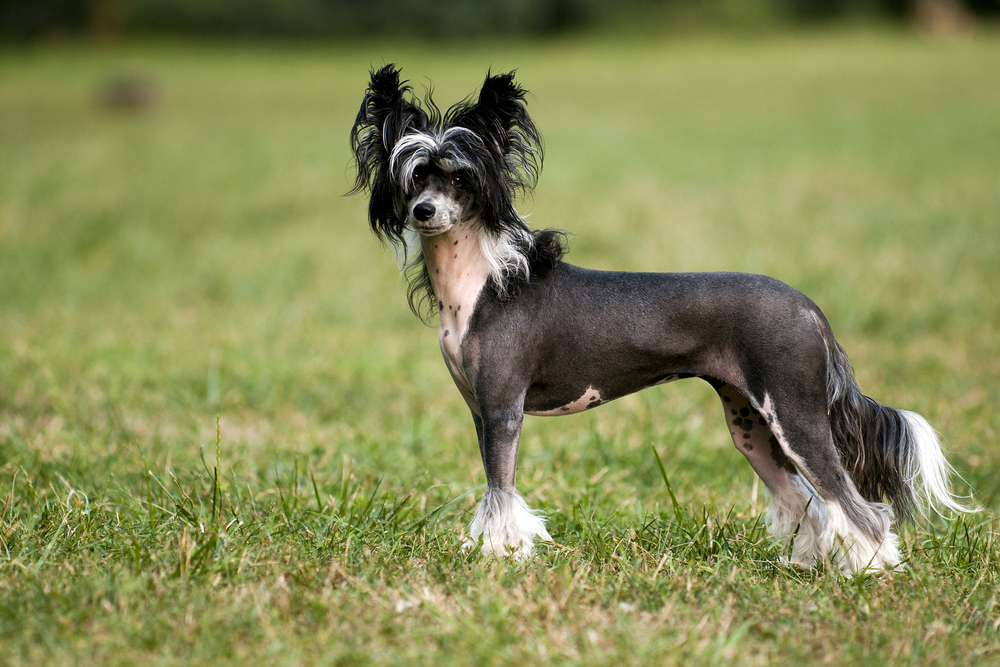
Chinese Crested Dog: The most popular hairless breed, the Crested is an engaging companion for people of all ages. It ranges from 23 to 33 cm at the withers. The hairless variety has long silky hair on the head, ears, neck crest, tail, ankles and feet. The coated variety, called the Powder Puff, has long silky hair all over. Many hairless Cresteds have some long hair that also appears on the body.
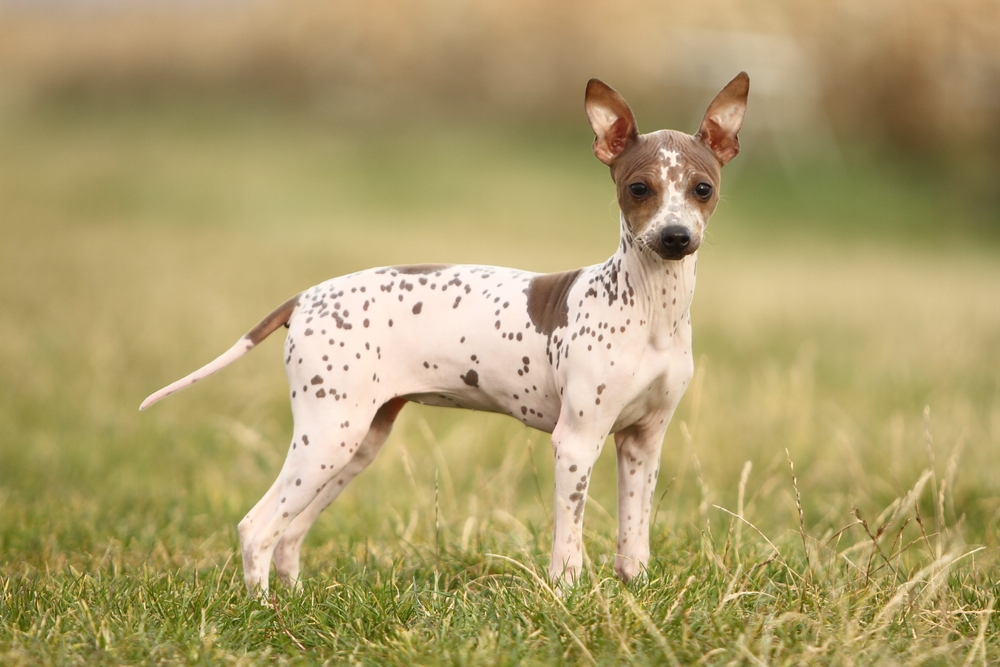
American Hairless Terrier: Bred from the Rat Terrier, this small feisty character is very energetic, playful and affectionate. He stands about 30.5 to 40.6 cm at the shoulder. The hairless version is born with a slight downy coat that goes away by 10 weeks of age. The adult is totally hairless except for whiskers and guard hairs on the eyebrows and muzzle. The coated type is covered with short smooth hair.
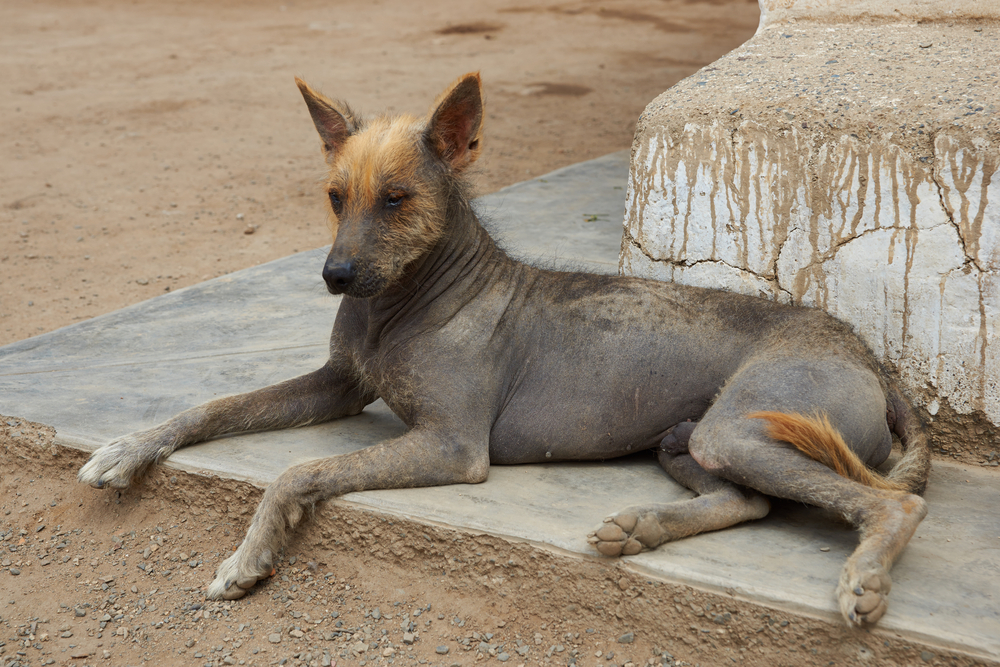
Peruvian Hairless Dog: Hailing from South America, it’s also called the Peruvian Inca Orchid. This streamlined dog comes in three size divisions: Small (25 to 40 cm; 4 to 8 kg), Medium (40 to 50 cm; 8 to 12 kg) and Large (50 to 65 cm; 12 to 30 kg). It has only a few hairs on the head and extremities of the legs and tail. The coated version has short smooth hair all over.
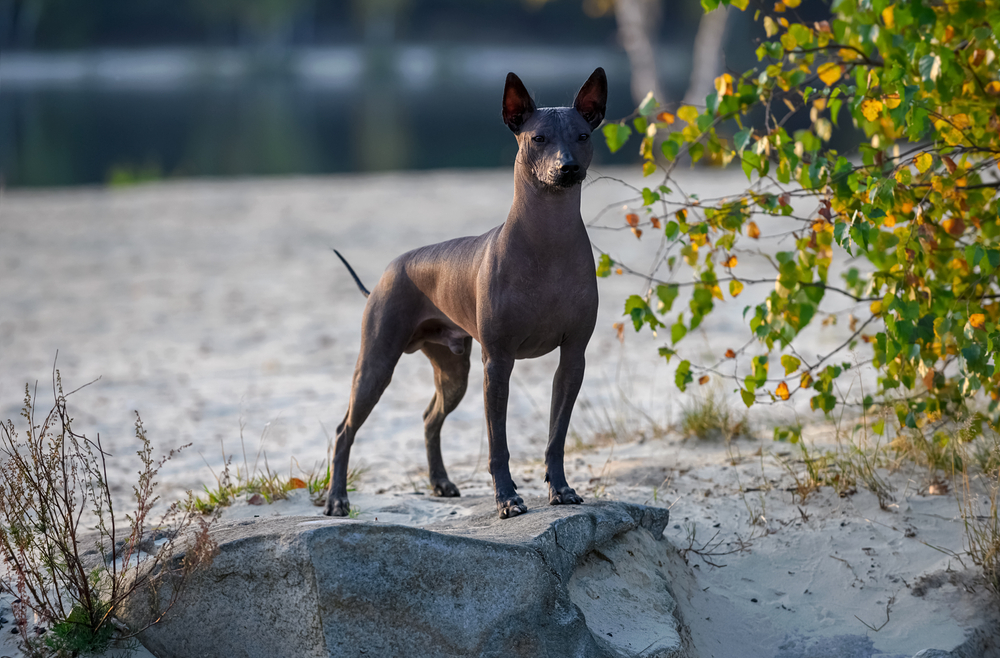
Xoloitzcuintle: The Xolo is a calm affectionate dog that makes a great companion as well as a watchdog. It’s a bit stockier compared to the Peruvian Hairless. It also comes in three size divisions: Standard (46 to 60 cm), Intermediate (36 to 45 cm) and Miniature (25 to 35 cm). Hairless Xolos are totally nude except for short coarse bristle-like hairs on the forehead, feet and end of the tail.
Want something really off the mainstream? These hairless breeds are not recognized by the Australian National Kennel Council because they’re just too rare—maybe even extinct: Abyssinian Sand Terrier, Argentine Pila Dog, Ecuadorean Hairless, Hairless Khala (Bolivian Hairless Dog), and Jonangi.
